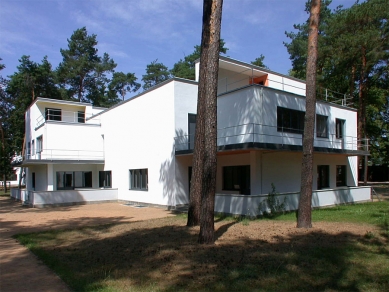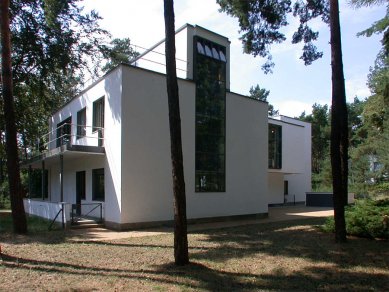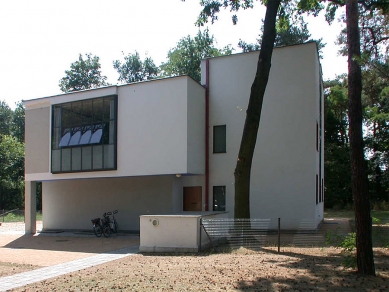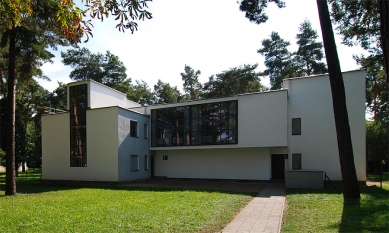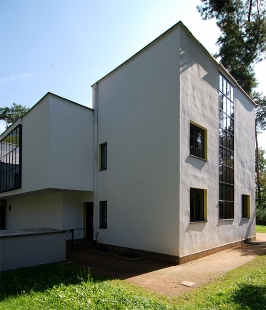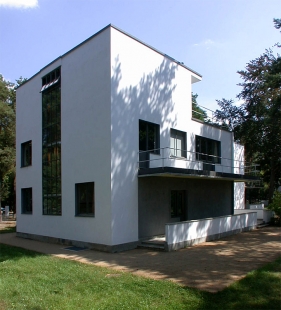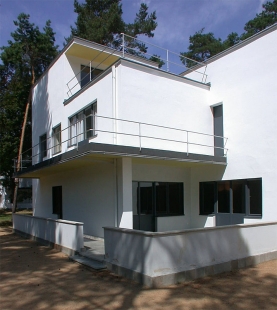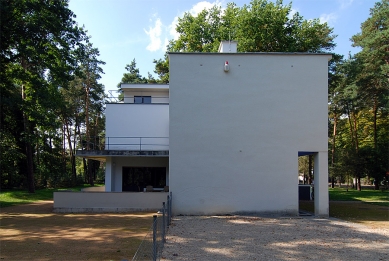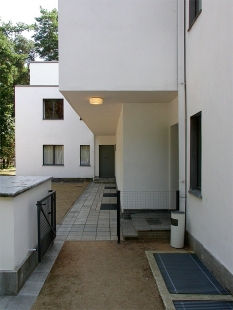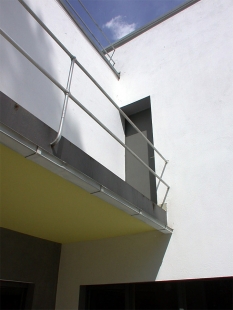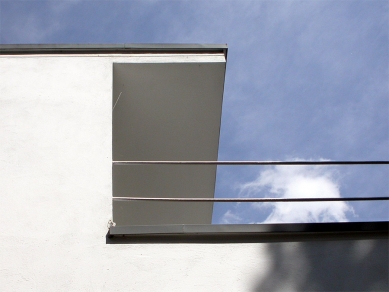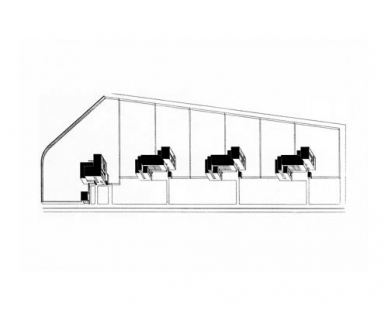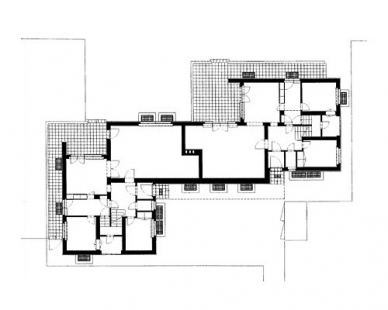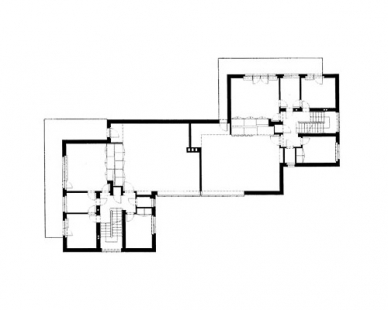
<Mistrovské domy> translates to <Master Houses>

Part of the Bauhaus complex are the duplex homes of the teachers. These have been carefully reconstructed and now serve as study centers or homes for design institutions. A pleasant pine grove has grown right up to the houses, and in the eyes of some Czech architecture teachers, the thought of a similarly comfortable dwelling for current educators brings a tear to their eye.
The master's houses included one isolated family house for Gropius and three duplexes for the families of Klee, Kandinsky, Muche, Schlemmer, and Moholy-Nagy with Feininger. Gropius used one floor plan for all three duplexes; his house had its own layout. On the ground floor of the duplexes, there was a living room, a smaller dining room, and a well-equipped kitchen with a built-in pantry.
The greatest luxury of the duplexes was the spacious studio on the first floor. All houses were equipped with a veranda and balconies.
In Gropius's house, the most important rooms were located on the ground floor. The living room, which also served as a study, could transform into one large space when the doors to the adjacent dining room were opened. However, the floor plan solutions were considered conventional.
Gropius shaped the exterior as a merging of cubic volumes. Once again, Gropius's balance of horizontal and vertical forces in the spirit of De Stijl redefined traditional architecture.
The restored colorful coatings of the interiors are worth noting. They were created in collaboration with the mural painting studio. The most striking colors are (surprisingly) found in the houses of the painters Klee, Kandinsky, and Feininger.
The houses were built from so-called Jurko bricks - blocks made of slag, sand, and cement. The ceiling panels were made of reinforced concrete prefab panels, and their projections served as balconies. The flat roofs were equipped with waterproofing made of poured asphalt. After the closure of the Bauhaus in 1932, the houses were sold and subsequently rebuilt beyond recognition. The duplexes were restored to their original form at the end of the 1990s; Gropius's house, along with half of the neighboring duplex, was destroyed during the war.
Currently, there are considerations for rebuilding Gropius's house according to the original documentation. The structures are listed as UNESCO cultural heritage sites.
The master's houses included one isolated family house for Gropius and three duplexes for the families of Klee, Kandinsky, Muche, Schlemmer, and Moholy-Nagy with Feininger. Gropius used one floor plan for all three duplexes; his house had its own layout. On the ground floor of the duplexes, there was a living room, a smaller dining room, and a well-equipped kitchen with a built-in pantry.
The greatest luxury of the duplexes was the spacious studio on the first floor. All houses were equipped with a veranda and balconies.
In Gropius's house, the most important rooms were located on the ground floor. The living room, which also served as a study, could transform into one large space when the doors to the adjacent dining room were opened. However, the floor plan solutions were considered conventional.
Gropius shaped the exterior as a merging of cubic volumes. Once again, Gropius's balance of horizontal and vertical forces in the spirit of De Stijl redefined traditional architecture.
The restored colorful coatings of the interiors are worth noting. They were created in collaboration with the mural painting studio. The most striking colors are (surprisingly) found in the houses of the painters Klee, Kandinsky, and Feininger.
The houses were built from so-called Jurko bricks - blocks made of slag, sand, and cement. The ceiling panels were made of reinforced concrete prefab panels, and their projections served as balconies. The flat roofs were equipped with waterproofing made of poured asphalt. After the closure of the Bauhaus in 1932, the houses were sold and subsequently rebuilt beyond recognition. The duplexes were restored to their original form at the end of the 1990s; Gropius's house, along with half of the neighboring duplex, was destroyed during the war.
Currently, there are considerations for rebuilding Gropius's house according to the original documentation. The structures are listed as UNESCO cultural heritage sites.
The English translation is powered by AI tool. Switch to Czech to view the original text source.
0 comments
add comment


